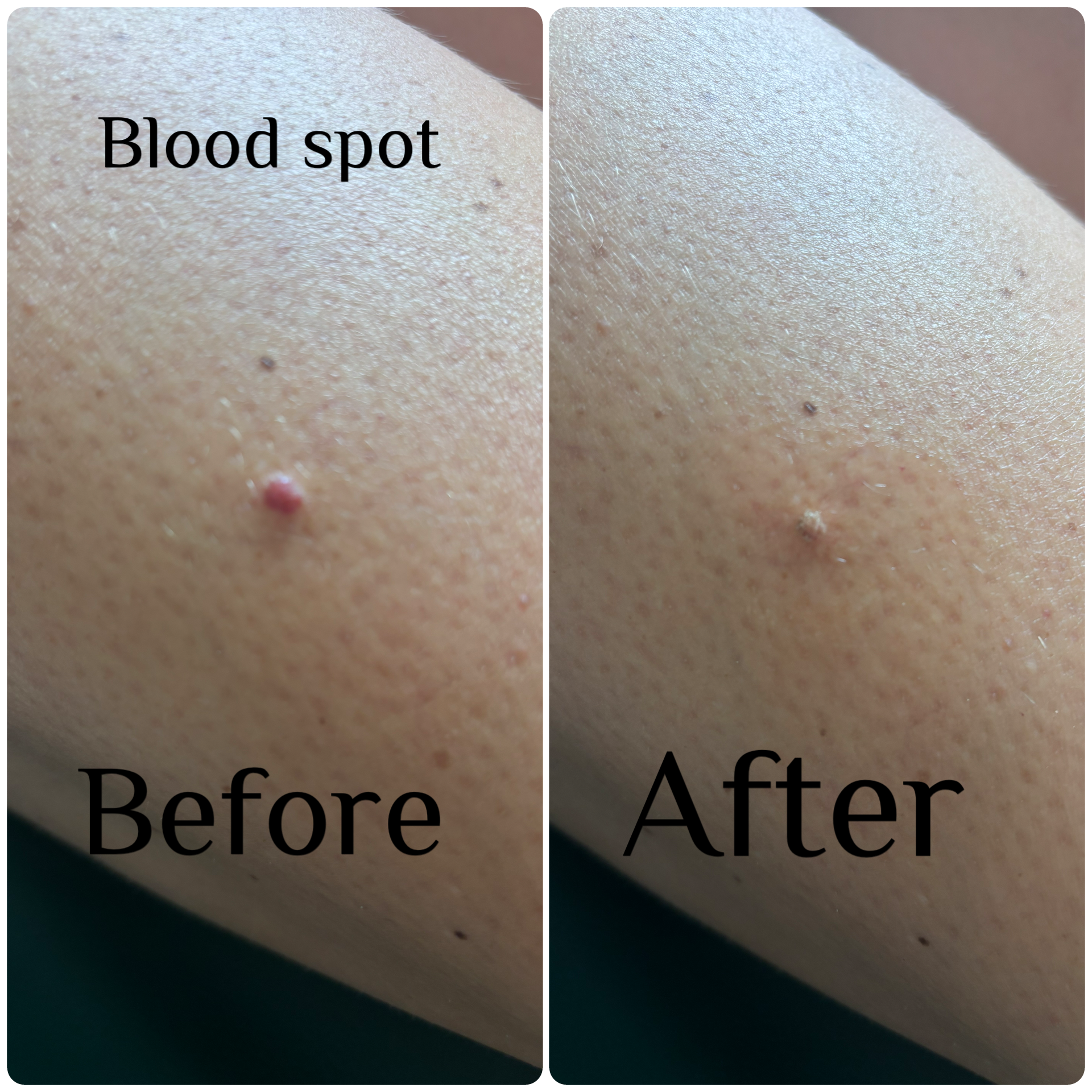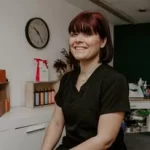Advanced Cosmetic Procedures – Electrolysis Skin Treatments
Advanced Cosmetic Procedures (ACP) is a specialised treatment using electrolysis to effectively treat various benign skin conditions, including: Skin tags, Milia, Telangiectasia (commonly called spider veins), Campbell de Morgan spots (cherry angiomas) and other minor skin lesions.
Important Information Before Booking
Before scheduling your electrolysis skin treatments appointment, please consider the following:
- Medical Conditions: Let us know if you have any heart conditions, allergies, or other health issues.
- Holidays & Events: Plan your treatment at least 4 weeks before any special occasions or holidays. Healing typically takes 4 to 6 weeks, although this can vary.
- GP Consent: Some blemishes may require written consent from your GP before treatment can proceed.
New Service: Check My Mole
We are now pleased to offer the “Check My Mole” service. This allows you to have a mole examined by a dermatologist. Photos are submitted electronically, and a full report is usually returned within 24 hours. Please note: there is a fee for this service.
⚠️ Not all skin lesions are suitable for removal. We will assess your skin and recommend the most appropriate treatment during your consultation.
Electrolysis Skin Treatments
Telangiectasia (Dilated Capillaries)
Often mistaken for broken capillaries, these are permanently dilated capillaries. They may appear due to genetics, hormonal changes, ageing, or pregnancy.
Treatment:
A fine probe is inserted into the area, delivering a tiny electrical current to collapse the capillary. Results are often immediate, with most sessions kept to 15 minutes per cheek.
Healing Time:
4–6 weeks, though this can vary. You’ll be invited back after 6 weeks to review the results and plan further treatments if needed.
Campbell de Morgan Spots (Cherry Angiomas)
These small, bright red spots are common on the trunk of the body, especially in middle-aged and older clients, and more frequently in men.
Treatment:
The probe is used to apply a current directly to the angioma. In many cases, the spot disappears instantly.
Healing Time:
4–6 weeks. Usually, only one treatment is necessary.
Skin Tags (Fibroepithelial Polyps / Papillomas)
These soft growths often appear in areas of friction such as the neck, underarms, under the breasts, or groin. They can also appear on the eyelids.
Treatment:
Skin tags are usually removed in just one session using electrolysis. However, due to their nature, they can reoccur.
Milia
Milia are small, hard, pearl-like cysts that form just beneath the surface of the skin. They often appear around the eyes and face. These are superficial and very easy to remove with advanced electrolysis.
Treatment:
A fine probe is used to gently treat the area, allowing the milia to be released from the skin.
Seborrheic Keratosis
A very common, benign (non-cancerous) skin growth that tends to develop with age. They usually appear on the torso and can vary in size and colour – typically brown, black, or light tan. They often look waxy, scaly, and slightly raised.
Treatment:
Although harmless, many people choose to have them removed for cosmetic or comfort reasons. A course of treatments may be required depending on the size and number of lesions.
Please note: Pigmentation may remain slightly different after treatment.
Moles
Moles can be treated with advanced electrolysis to visibly reduce their appearance. While not fully removed, they can be flattened and significantly lightened.
Treatment:
The first session often reduces the mole by up to one-third of its original size. A second treatment can reduce it further, leaving it flat to the skin.
Please note: The surrounding skin may not match perfectly in colour
Age Spots (Liver Spots)
Typically caused by sun exposure or artificial tanning, age spots are common on the face and hands of middle-aged and older individuals.
Treatment:
A patch test will be performed first to ensure the skin beneath is lighter than the age spot. If it is, treatment can proceed. If not, the pigmentation is too deep and cannot be treated.
Xanthomas
Xanthomas are fatty deposits that appear as yellowish bumps, often found around the eyes. These vary in size and are typically caused by underlying lipid disorders.
Treatment:
Electrolysis helps to shrink the xanthoma and reduce pigmentation. Multiple treatments are usually needed for best results.
Please note: Pigmentation may not return to the exact tone of the surrounding skin.
Sebaceous Cysts
These cysts are caused by a build-up of keratin under the skin. They are slow-growing, painless, and often found around the scalp or hairline, particularly in men.
Treatment:
The electrolysis probe is inserted into the cyst and a current is applied to soften and break it down. Sometimes the cyst contents are expelled immediately; other times, the body absorbs or expels it naturally over time.
A 2-week follow-up is recommended. Multiple treatments may be necessary.
Verrucas
Verrucas are very contagious blemish and a lot of at home treatments don’t seem to work.
Treatment:
The verrucas will be filled down so the probes are able to penetrate in to the verruca. The current is then applied to multiple areas in the verruca.
These heal from the inside out so you will not necessarily see any change straight after the treatment. It can take up to 3 months to heal where we can then assess and see if further treatments are needed.
Warts
These are commonly found on hands but can also be found on other areas on the body.
Treatment:
The probe is inserted in to the wart. Depending on the wart it may also need treating on the top.
This can also take up to 3 months to heal. After this time we can assess the treated blemish to see if it needs further treatment.











